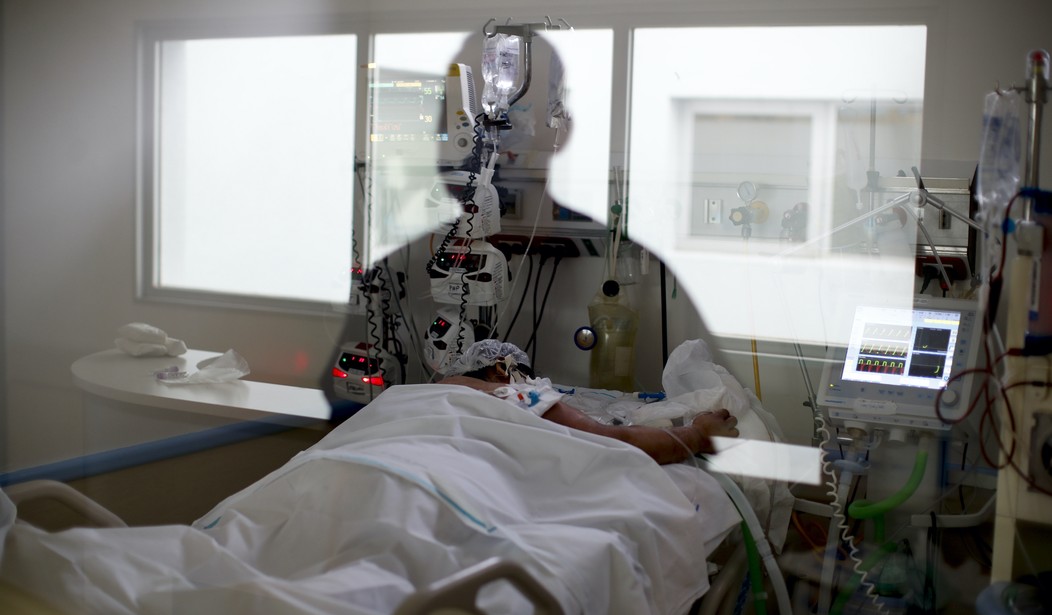Anyone who has been following RedState — or more specifically, my writing at RedState — would know that I am very good with data. At the beginning of the pandemic, I analyzed the data coming off one of the cruise ships where the SARS-CoV-2 virus first came to light. At the time, I was looking for patterns in the data which could tell us who may have brought the virus onto the ship in the first place as well as the affected populations. Later, as the left hailed the COVID-19 restrictions forced upon the residents of blue states, it became clear, from very easily accessible data, that the restrictions were not working. When testing soared and so did numbers for COVID positive tests, Trump was crucified by the media for appropriately attributing the problem. Even here at RedState, as we have attempted to report on the data (and actual science), the MSM and BigTech have shut down our ability to reach audiences as a result of what amounted to their denial of cold-hard facts.
As we have now suddenly entered this post-COVID-panic environment, we are suddenly allowed to talk about the reality of the COVID-nightmare, and what all of the data, science, and facts really mean. Although we have been talking about this for months, suddenly certain MSM sources are starting to catch on. First, it was The Intercept and then The Daily Mail. Now it appears that The Atlantic has joined the fray.
Today, The Atlantic published an article entitled “Our Most Reliable Pandemic Number is Losing Meaning” (which appears to have been originally entitled “COVID Hospitalization Numbers Can Be Misleading”), reporting on a new study that analyzed data coming out of hospitalization cases. Weeks ago, when cases and hospitalizations began to rise, I suggested (because of this thing called “data”) that COVID-19 hospitalizations went up because the bar for hospitalizations went down. Simply put, the numbers went up because hospitals lowered their standards for which COVID patients should be hospitalized. The study that The Atlantic published? It suggests that very thing.
So what has taken us so long to get to this point? Well, again, the problem falls on the CDC, NIH, and NIAID, who have not standardized data collection nationally for this pandemic. This does nothing but highlight Dr. Anthony Fauci’s total and complete ineptness as well as that of Dr. Rochelle Walensky and Dr. Francis Collins. To this day, the CDC does not collect nationalized data for several factors which would help us better analyze how to approach this pandemic, including breakthrough cases and hospitalization case severity. That means that someone admitted to the hospital out of an abundance (and sometimes an overkill) of caution, is counted as the same hospitalization as someone with a much more severe case. To those making decisions at the top, a hospitalization, is a hospitalization, is a hospitalization.
FromThe Atlantic:
If you want to make sense of the number of COVID hospitalizations at any given time, you need to know how sick each patient actually is. Until now, that’s been almost impossible to suss out. The federal government requires hospitals to report every patient who tests positive for COVID, yet the overall tallies of COVID hospitalizations, made available on various state and federal dashboards and widely reported on by the media, do not differentiate based on severity of illness. Some patients need extensive medical intervention, such as getting intubated. Others require supplemental oxygen or administration of the steroid dexamethasone. But there are many COVID patients in the hospital with fairly mild symptoms, too, who have been admitted for further observation on account of their comorbidities, or because they reported feeling short of breath. Another portion of the patients in this tally are in the hospital for something unrelated to COVID, and discovered that they were infected only because they were tested upon admission. How many patients fall into each category has been a topic of much speculation.
Which was the primary motivation for the study, conducted by the VA Boston Healthcare System. The doctors who performed the study took it upon themselves to provide a line, which after a patient meets a certain amount of criteria, could classify them as a severe case. According to the study, (which has not as of yet been peer-reviewed), once patients had to be placed on supplemental oxygen to survive, they could be considered a moderate-to-severe case. What the study found was very interesting. Hospitalized patients, who required supplemental oxygen fell from 64% to 52%. That means that either alternative treatments were more effective, or (and as I have been saying for months) hospitals began admitting patients with less severe symptoms. To further confirm the point, the study found that up until January 2021, 36% of patients who were admitted to the hospital had mild or asymptomatic cases. That number rose to 48% by the end of June 2021.
So why would hospitals do this? The Atlantic article fails to question this, only to find ways that the study may be flawed by offering various caveats. Presumably, and very likely, this has to do with the fact that COVID hospitalizations are reimbursed at a higher rate than would say, your typical health insurance plan. Congress set aside 100 billion dollars for hospitals from the CARES Act to help with this issue. Should hospitals be left with a choice as to whether they leave beds empty or place a COVID patient, it boils down to a simple business decision: Patient in bed: Paid. No Patient in Bed: Not Paid.
Stay tuned to RedState as we continue to lead the reporting on COVID-19.














Join the conversation as a VIP Member